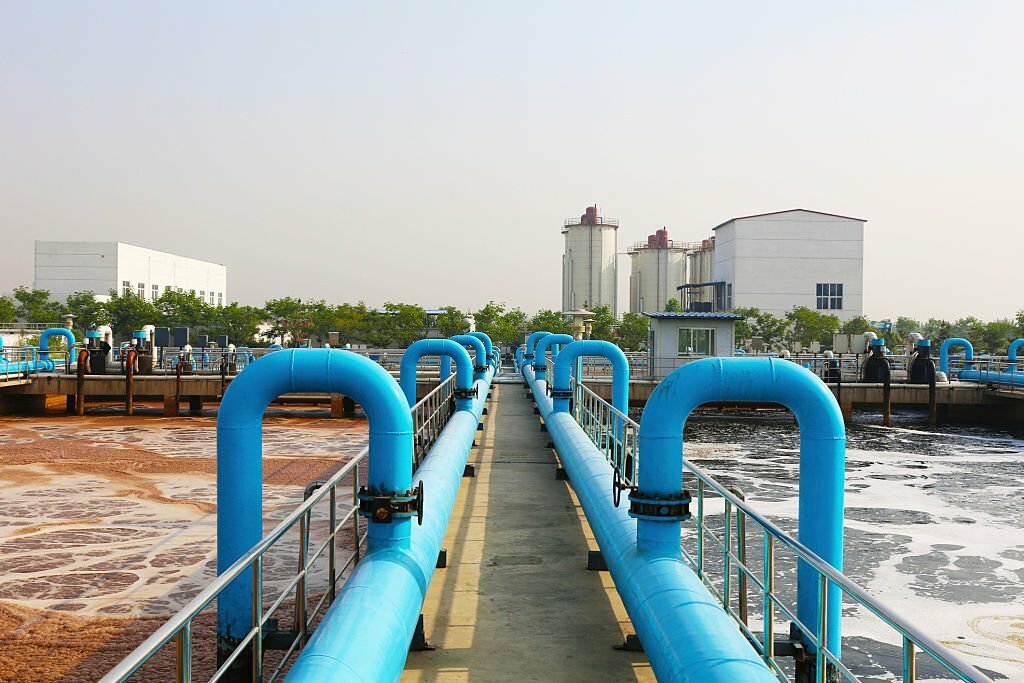Wastewater treatment plants in India, especially in bustling urban centres like Delhi, face the formidable task of purifying water tainted with diverse pollutants. Amidst the myriad tools employed in these facilities, microorganisms emerge as silent workers, diligently coordinating the conversion of contaminated water into a resource suitable for reuse or safe discharge. This comprehensive exploration dives into the fascinating world of microorganisms and their indispensable role in sewage treatment plants.
Microorganisms in Nature
Microorganisms are nature’s recyclers, omnipresent and fundamental in various ecological processes. Bacteria, fungi, algae, and protozoa constitute this diverse group, contributing significantly to the balance of ecosystems. These microorganisms are strategically employed in wastewater treatment plants for their unique abilities to break down organic matter and pollutants, facilitating the conversion of wastewater into a harmless form.

Common Microorganisms Used in Wastewater Treatment Plants
Aerobic Bacteria
Aerobic bacteria, thriving in oxygen-rich environments, play a crucial role in the initial stages of wastewater treatment. These microorganisms exhibit an unparalleled knack for consuming organic pollutants, including proteins, carbohydrates, and fats. Through aerobic respiration, they transform these complex substances into simpler compounds, laying the foundation for the overall efficiency of wastewater treatment plants.
Expanding on this, certain strains of aerobic bacteria are specifically tailored to target and degrade different types of contaminants. For instance, Pseudomonas and Bacillus species are known for their prowess in breaking down hydrocarbons, making them essential in treating wastewater from industries that deal with oil and petroleum products.
Anaerobic Bacteria
In the oxygen-depleted environments of the secondary treatment phase, anaerobic bacteria take centre stage. These microorganisms specialise in breaking down complex organic compounds through anaerobic digestion. The unique byproduct of this process is methane gas, a valuable resource that can be harnessed as renewable energy. This dual functionality positions anaerobic bacteria as key players in treating high-strength industrial wastewater, offering pollution control and energy generation.
Moreover, recent research in India has focused on optimising anaerobic digestion processes in wastewater treatment plants to enhance methane production for local energy needs, contributing to the country’s sustainable development goals.
Facultative Bacteria
Facultative bacteria exhibit unmatched versatility with their ability to thrive in oxygen-rich and oxygen-depleted conditions. This adaptability makes them indispensable at various stages of wastewater treatment, contributing significantly to the reduction of organic matter and nutrients. Further research is ongoing to identify and harness specific strains of facultative bacteria that can thrive in the diverse and dynamic wastewater conditions observed in Indian treatment plants.
Results of Using Microorganisms in Wastewater Treatment
The integration of microorganisms in wastewater treatment plants yields multifaceted benefits, significantly enhancing the efficiency and environmental sustainability of the process. Let’s delve deeper into the tangible results of employing these microscopic allies.
FOG (Fats, Oil, and Grease) Elimination
The battle against FOG in wastewater is a constant challenge, particularly in regions with high culinary activity. Aerobic bacteria, with their voracious appetite for fats, oils, and grease, play a pivotal role in preventing the accumulation of these substances in treatment systems. Innovative approaches, such as bioaugmentation (introducing specific microbial cultures), are being explored in sewage treatment plants to address localised challenges related to FOG and to further optimise this process.
BOD (Biochemical Oxygen Demand) Reduction
Microorganisms, especially aerobic bacteria, act as biochemical surgeons, targeting and reducing the biochemical oxygen demand in wastewater. This reduction is crucial in preventing oxygen depletion in water bodies and safeguarding aquatic ecosystems. Ongoing research is focused on understanding the microbial diversity in Indian water bodies to tailor treatment processes that effectively address the unique challenges posed by varying BOD levels across different regions.
COD (Chemical Oxygen Demand) Reduction
Reducing chemical oxygen demand is a critical objective in wastewater treatment, and microorganisms are at the forefront of achieving this. Efforts are underway to optimise the groups of microorganisms used in treatment plants to efficiently break down organic and inorganic contaminants, substantially reducing COD levels. These advancements contribute to environmental conservation and the sustainable management of water resources in water-scarce regions.
TSS (Total Suspended Solids) Reduction
Removing total suspended solids is a critical aspect of wastewater treatment, impacting the visual clarity of treated water and preventing environmental harm. Microorganisms, especially those in the secondary treatment phase, are pivotal in facilitating the sedimentation process. In the context of sewage treatment plants in Delhi, ongoing initiatives aim to incorporate nature-based solutions, like constructed wetlands, to enhance the effectiveness of microorganisms in reducing TSS levels.
Odor Elimination
Microorganisms don’t just tackle pollutants. They also contribute significantly to eliminating unpleasant odours associated with wastewater treatment. The metabolic activities of these microscopic allies transform stinking compounds into less offensive byproducts, making the process more amicable to the surrounding environment. Research continues in exploring biofiltration systems, incorporating specific odour-reducing microbial strains to enhance the olfactory aspects of wastewater treatment.
Innovation and Future Prospects
As wastewater treatment becomes more critical in India’s evolving landscape, ongoing research and innovation continue to push the boundaries of microbial applications. From harnessing microbial fuel cells for electricity generation to developing smart microbial sensors for real-time monitoring, the future holds promising prospects for integrating microorganisms in wastewater treatment plants more effectively.
The Role of the Physical Environment
Microorganisms in sewage treatment plants need a specific environment to thrive and break down waste efficiently. The right balance of oxygen levels, pH, temperature, and nutrients is necessary to ensure that microorganisms can do their job. We’ll take a closer look at how each of these factors is controlled to make sure that sewage treatment plants work the way they should.
Sewage Composition
The sewage that flows into wastewater treatment plants is a complex mixture of organic and inorganic compounds, including solids, liquids, and dissolved materials. The composition of sewage is diverse, which makes it challenging for the microbial community to adapt and thrive. This is particularly important for Delhi, where the sewage can vary widely due to the city’s diverse industrial activities. Therefore, it is crucial to understand the intricacies of sewage composition to ensure proper wastewater treatment.
Advanced monitoring systems are employed to analyse the sewage composition in real-time to tackle this variability. This data allows plant operators to make informed decisions, adjusting treatment processes to accommodate fluctuations in the incoming sewage. The ability to adapt to diverse sewage compositions ensures that the microbial workforce remains effective in degrading a broad spectrum of pollutants.
Oxygen Level
Different types of microorganisms have different needs when it comes to oxygen levels. Some bacteria thrive in environments with plenty of oxygen, while others do better in environments with less oxygen. To keep a wastewater treatment plant running smoothly, it’s important to find the right balance between these different types of microorganisms.
In sewage plants, sophisticated aeration systems regulate oxygen levels. Aeration provides the necessary oxygen for aerobic bacteria to perform their vital role and prevents the accumulation of anaerobic byproducts. This delicate balance ensures optimal microbial activity, contributing to the efficient breakdown of organic matter and the removal of pollutants.
pH
The pH level of the wastewater is a critical factor influencing microbial activity. Microorganisms exhibit distinct preferences for acidic, neutral, or alkaline environments. In the controlled setting of a wastewater plant, maintaining the optimal pH range is essential for the sustained performance of the microbial community.
Treatment plants rely on advanced pH monitoring and adjustment systems to ensure the ideal chemical environment for the microorganisms responsible for breaking down organic material. These systems constantly monitor and adjust the pH levels in real-time, optimising the microbial balance to maximise efficiency. By fine-tuning the pH, the microbial groups can work at their best, breaking down organic matter effectively and efficiently.
Temperature
Microorganisms, much like humans, have a comfort zone when it comes to temperature. Maintaining an optimal temperature range for wastewater treatment plants, where temperature variations can be significant, is crucial for the microbial workforce.
State-of-the-art heating and cooling systems regulate the temperature within treatment plants. These systems ensure that microorganisms operate within their ideal temperature range, optimising their metabolic activities. Controlling the temperature not only enhances microbial efficiency but also contributes to the prevention of potential upsets in the treatment process.
Nutrient Availability
Microorganisms require specific nutrients to fuel their metabolic processes. In the controlled environment of a wastewater treatment plant, ensuring the availability of essential nutrients is fundamental for sustained microbial activity.
Nutrient management systems, including adding nitrogen and phosphorus compounds, are meticulously calibrated to meet the microbial community’s nutritional needs. This targeted approach supports the efficient degradation of pollutants and prevents nutrient imbalances that could disrupt the microbial ecosystem.
Get the Best Services for Your Wastewater Treatment Plant
At Cleantech Water, we offer operational and maintenance services for wastewater treatment plants in Delhi and other cities in India. Our team of experts has extensive knowledge of the city’s wastewater treatment landscape and provides customised solutions to ensure your facility performs at its best. We take care of everything from equipment maintenance to system optimisation to enhance your plant’s efficiency.
Our services are designed to help you achieve your wastewater treatment goals without any operational difficulties. We believe that maintaining your plant’s performance is crucial for its longevity and positive environmental impact. Our team is committed to providing the best-in-class operational and maintenance services tailored to your plant’s unique requirements.
If you want to transform your wastewater management experience and make it cleaner and greener, contact us today at +91-9558996411 or write to us at Info@cleantechwater.co.in. At Cleantech Water, we ensure that your plant achieves optimal performance while meeting your specific needs.

